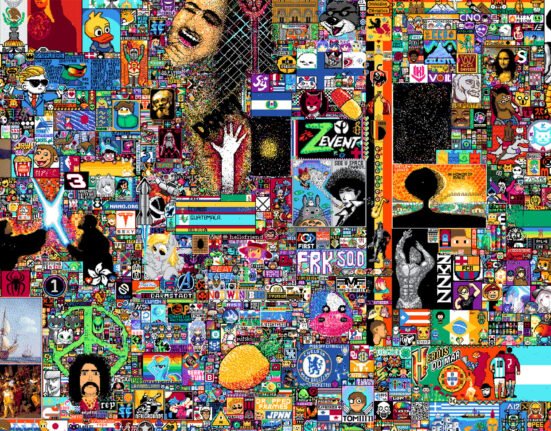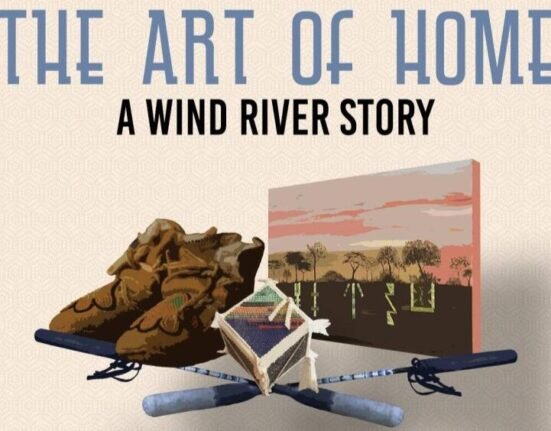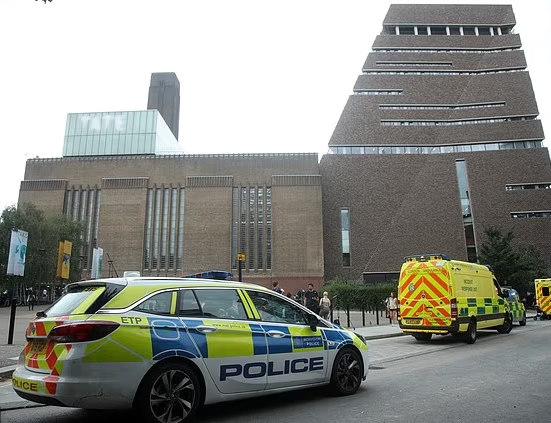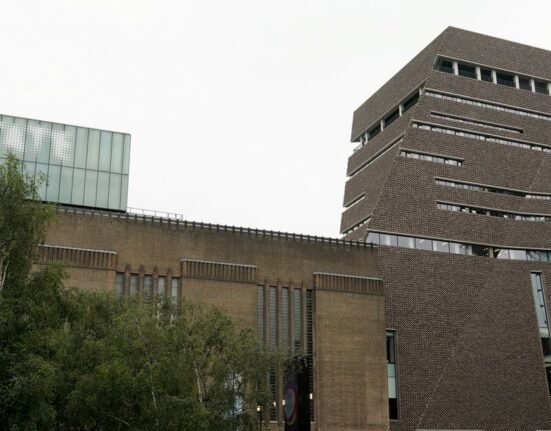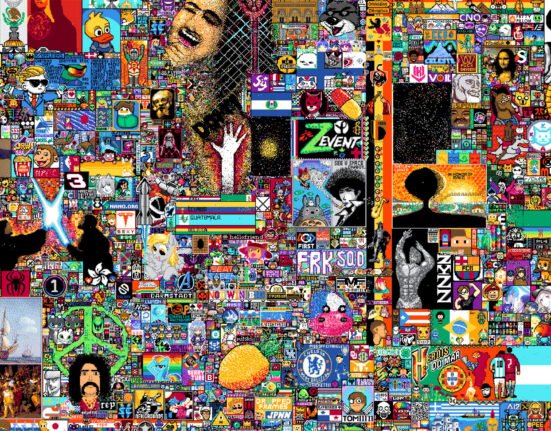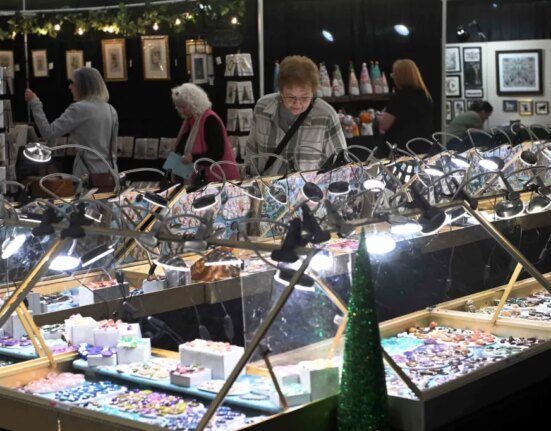An exhibition at the Autry Museum of the American West provides an Indigenous perspective of the California Missions Trail.
Today, if you say El Camino in California’s San Mateo and Santa Clara counties, it will conjure a congested stop-and-go road through densely populated high-tech cities in the Bay Area. But the original El Camino Real, the “Royal Road” of the Spanish colonial era, was a 600-mile trade route that joined 21 missions from San Diego to San Francisco, allowing Spain’s domination of Baja and Alta California and the Franciscans’ domination of the Indigenous population.
Independent curator Deana Dartt noticed that the story of El Camino Real was mostly absent from mainstream histories and education. Though she was reared and schooled in California’s San Fernando Valley, she had never learned about the state’s Indigenous people nor anything about the Native experience in the missions.
Dartt decided that an Indigenous intervention was necessary—and it needed to be presented in a mainstream museum.
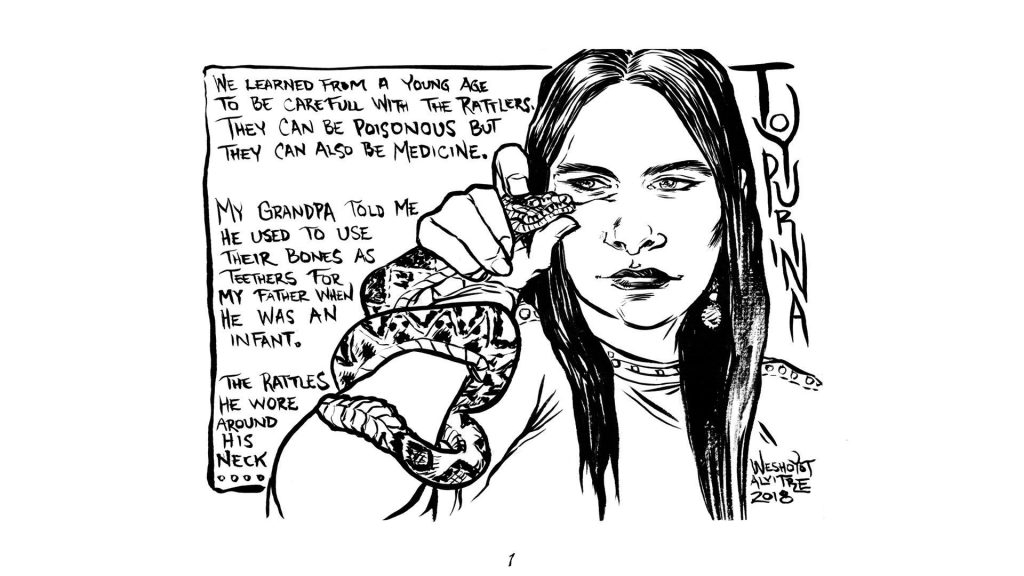 Washoyot Alvitre, “Toypurina: Our Lady of Sorrows,” 2020-2022. Ink on paper in leather binding.
Washoyot Alvitre, “Toypurina: Our Lady of Sorrows,” 2020-2022. Ink on paper in leather binding.
In putting together an exhibition that would boost the El Camino narrative with an Indigenous perspective, Dartt (Coastal Chumash, Mestiza) researched different museums, interviewed Native Americans along the route, and enlisted the participation of tribal leaders, artists, and scholars from the greater California coast. The result is Reclaiming El Camino: Native Resistance in the Missions and Beyond, on view at the Autry Museum of the American West in Los Angeles.
As the title suggests, its goal is to reclaim the road that facilitated migration and movement among Indigenous people and to recast it as one that emphasized connections, social alliances, and the realities of interdependence along the Pacific Coast—pre-California, pre-border, and long before, and despite, the mission system. The show details the hardships Native populations faced under European settlement and highlights Indigenous resistance, as it educates about Native life and the history of activism in the California borderlands region long before the establishment of the Franciscan missions in Baja and Alta California.
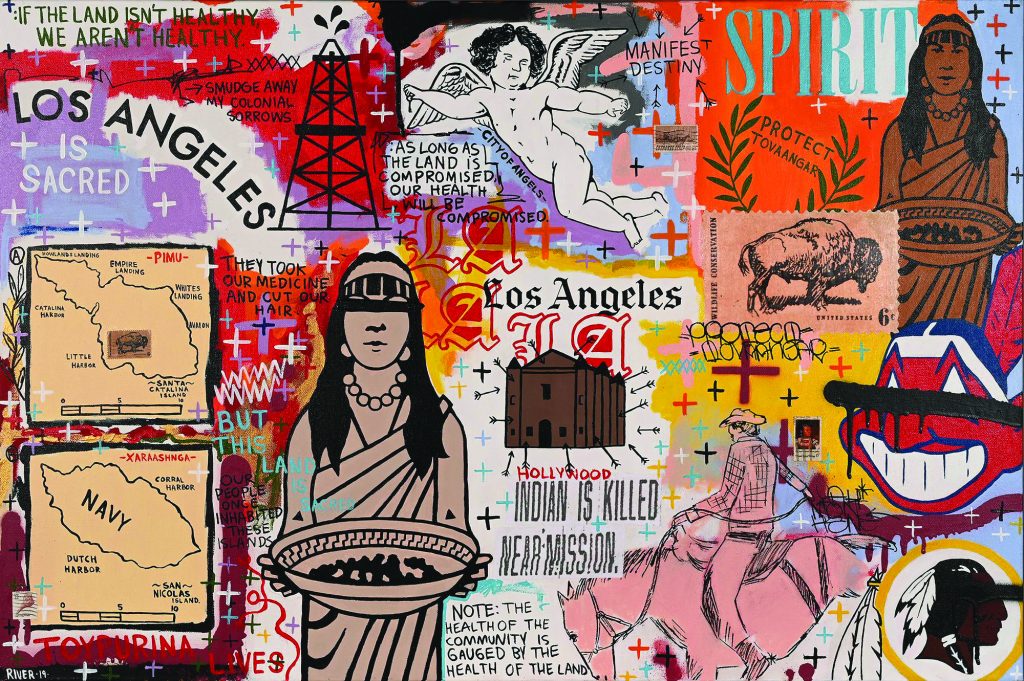 River Garza “What the City Gave Us” 2022, acrylic, spray paint and marker.
River Garza “What the City Gave Us” 2022, acrylic, spray paint and marker.
Blending history and contemporary art—including works by Native artists such as Gerald Clarke (Cahuilla), James Luna (Puyukitchum/Ipai/Mexican American Indian), and others—the exhibition brings the legacy of the mission colonization to a broader audience. A featured work by Los Angeles artist River Garza (Tongva) underlines the struggle. His What the City Gave Us—done in acrylic, spray paint, and marker—is a thought-provoking mashup of Native mascots, Indigenous women, oil wells, headlines, a buffalo, and a cowboy.
“There are not a lot of mainstream museums that would have taken on a project that uses genocide to describe what happened in the missions, even though 90 percent of Native people refer to the El Camino Real and the Franciscan missions as sites of ‘genocide,’” Dartt told ARTnews. “There were living Native people who were fighting against that regime the entire time. I use the artwork of living Native people who are fighting against the regime now to engage in each of those eras. Then, we show all the things we are doing to assert ourselves despite that.
“I feel like it is ultimately celebratory, but it doesn’t shy away from what happened to us.”
Reclaiming El Camino: Native Resistance in the Missions and Beyond is on view at the Autry Museum of the American West in Los Angeles through June 15, 2025.
HEADER: River Garza “What the City Gave Us” 2022, acrylic, spray paint and marker.


